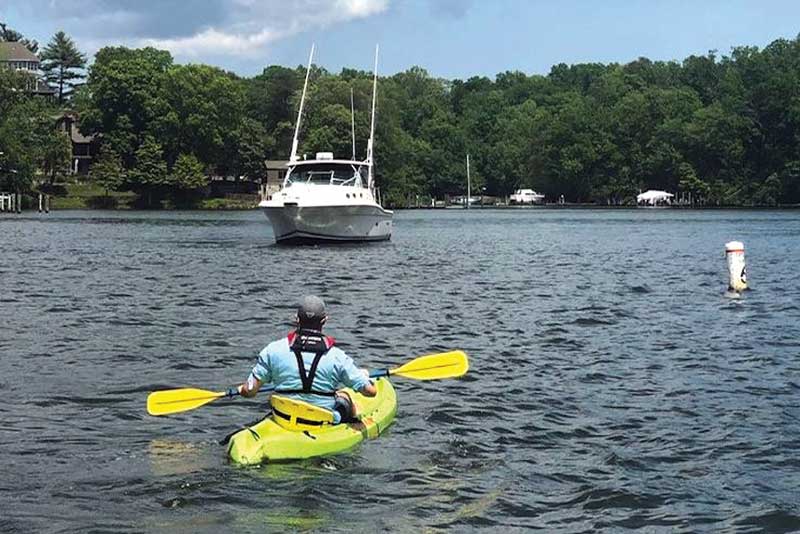These days we are seeing so many boats out on the water, and for good reason - boating is a great form of social distancing. But to do it safely, it never hurts to reacquaint ourselves with the rules of the road and general boating etiquette.

The BoatUS Foundation breaks down some of the rules of the road in these few scenarios:
- When two boats are meeting head on, keep right or steer to starboard. Pass port-to-port like cars.
- When crossing, give way to a boat ahead and to starboard. If a boat is in your danger zone (an arc measuring zero to 112.5 degrees), alter course, slow, or stop.
- When overtaking another boat, give way and steer clear.
BoatUS further explains how there is no “right of way” as there is on the street when driving a car; boats are either designated as the give-way vessel or the stand-on vessel.
If you are in the give-way vessel, you must act as if the stand-on vessel has the right to keep going the way it is going. It is your responsibility to signal your intentions to the stand-on vessel, and it is your responsibility to maneuver your boat around the other in a safe manner.
If you are in the stand-on vessel, it is your responsibility to acknowledge the intended actions of the give-way vessel. You must also maintain your current course and speed until the give-way vessel passes, or you enter a dangerous situation.
There is also a “pecking order” to determine right of way for different types of vessels. The lower most vessel on the list is the give-way vessel and must stay out of the way of vessels that are higher on the list.
- Overtaken vessel (top priority)
- Vessels not under command
- Vessels restricted in their ability to maneuver
- Vessels constrained by draft
- Fishing vessels engaged in fishing, with gear deployed
- Sailing vessels
- Power-driven vessels
But regardless of where a vessel is on the list, operators must always do their due diligence to avoid a collision.
Etiquette for paddlers:
Be seen. Bright clothing and lifejackets, warning flags, painting paddle blades bright colors, and adding reflective tape to the tips can ultimately give boaters more time to steer clear of you.
Try to cross channels at a 90-degree angle, and if you are with a group, cross together and not stretched out in a long line. This reduces the time you spend in a potentially hazardous waterway in which recreational vessels may be limited in navigation by size, draft, or maneuverability.
Even if you think you have right of way, practice defensive paddling to prevent collisions and mishaps in spite of the actions of others around you. Try to avoid heavy boat traffic and pick a route away from congestion. Typically, it is safest to pass astern of other vessels and let them cross in front of you. Some boats have awkward blind spots that prevent good visibility at certain trim angles, so never assume a boater can see you.
Etiquette for boaters:
Put down the phone, minimize distractions, and be on the active lookout for small craft. The U.S. Coast Guard reports that operator inattention and improper lookout are at the top of the list for contributing factors to accidents. Consider learning the S.C.A.N. (Search, Concentrate, Analyze, and Negotiate) method to help you safely navigate around paddlers and other traffic on the water.
Be mindful of your wake. While you may not be in an official slow speed zone, show courtesy and slow down in areas where paddlers congregate.
Be aware that some paddlers may not understand the rules of the road or all of the safety risks inherent to small-craft operation. Paddlecraft are highly maneuverable, so it’s good to give a little more breathing room on the water when you can. Everyone has a responsibility to avoid a collision.